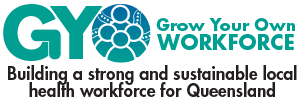The business case
A place-based workforce planning and development approach involving community engagement and partnerships can address critical workforce gaps and deliver broader health, economic, education and social and community benefits. As such, the value of implementing a Grow Your Own program is not exclusive to the health sector.
Potential flow-on benefits of a Grow Your Own workforce program
- Builds stable, skilled, diverse workforce.
- Improves morale and retention.
- Improves capacity, productivity and continuity of service delivery.
- Improves ability to deliver more culturally-sensitive services.
- Saves recruitment costs, resourcing and time.
- Improves retention, reducing costs associated with job turnover.
- Increases local spending, benefiting other local business.
- Stimulates the local economy.
- Boosts further job creation.
- Attracts increased local investment.
- Builds more liveable communities.

- Contributes to closing inequality in education, employment and health.
- Assists to reduce “brain drain” and population decline in rural and remote areas.
- Increases personal and household income, and reduces poverty.
- Breaks intergenerational cycles of unemployment.
- Improves transition from education to employment.
- Enhances opportunities to gain practical work experience.
- Increases student engagement and reduces student drop out.
- Improves student networks with potential employers.

HEALTH SYSTEM
- Builds stable, skilled, diverse workforce.
- Improves morale and retention.
- Improves capacity, productivity and continuity of service delivery.
- Improves ability to deliver more culturally-sensitive services.
ECONOMIC
- Saves recruitment costs, resourcing and time.
- Improves retention, reducing costs associated with job turnover.
- Increases local spending, benefiting other local business.
- Stimulates the local economy.
- Boosts further job creation.
- Attracts increased local investment.
- Builds more liveable communities.
SOCIAL & COMMUNITY
- Contributes to closing inequality in education, employment and health.
- Assists to reduce “brain drain” and population decline in rural and remote areas.
- Increases personal and household income, and reduces poverty.
- Breaks intergenerational cycles of unemployment.
EDUCATION
- Improves transition from education to employment.
- Enhances opportunities to gain practical work experience.
- Increases student engagement and reduces student drop out.
- Improves student networks with potential employers.
